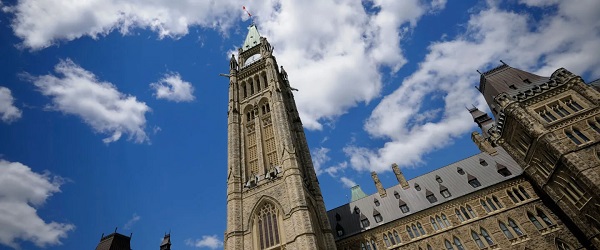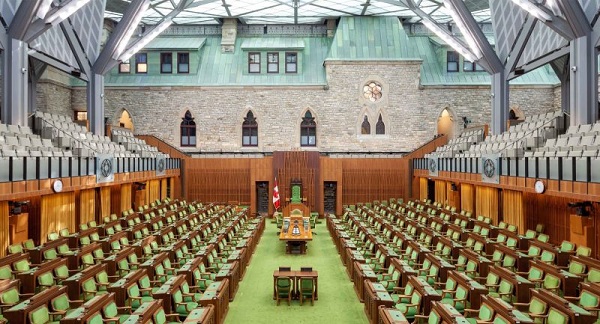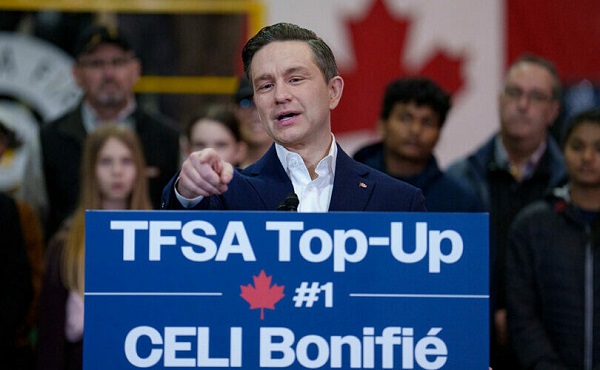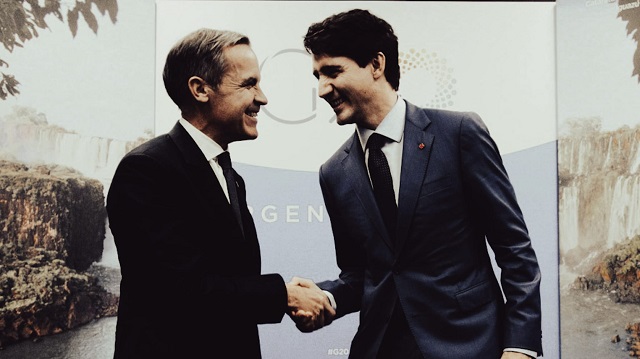Fraser Institute
Federal government’s ‘affordable housing’ strategy doomed without strong income growth

From the Fraser Institute
By Jake Fuss and Austin Thompson
Economist Mike Moffatt estimated that, if Canadian wages grow at the average rate seen over the past two decades—and if home prices remain stable—it would still take 20 years for Canada to achieve housing affordability levels of 2005… In other words, reality remains at odds with the Carney government’s ambitious rhetoric about delivering so-called “affordable homes.”
In a recent media scrum, the Carney government’s new federal housing minister Gregor Robertson—former mayor of Vancouver—was asked: “Should home prices go down?” His response: “No, I think that we need to deliver more supply, make sure the market is stable. We need to be delivering more affordable housing.”
Robertson’s response raises a follow-up question: what does the Carney government mean when it promises “affordable housing”?
Rising house prices are nothing new. The sticker price for the average Canadian home has increased in most years, barring periods such as the 2008–09 Global Financial Crisis. And house prices aren’t expected to fall anytime soon; forecasts point to continued house price growth. But for homebuyers, the key issue isn’t that prices are increasing; it’s whether they’re rising faster than incomes. By that measure, housing in Canada has become much less affordable in recent years.
Consider Minister Robertson’s tenure as Vancouver mayor from 2008 to 2018. During that time, the price of a typical single- or semi-detached Vancouver home grew from $690,000 to $1,980,000—a 187 per cent increase. Meanwhile, the after-tax income of a typical Vancouver family rose by just 15 per cent. Today, the typical single- or semi-detached home in Vancouver costs $2,380,000. Vancouver’s housing market is somewhat unique, but strong price increases reflect a broader national trend: home prices have risen dramatically even as income growth has stagnated, largely because housing demand—driven by immigration-fuelled population growth—continues to far exceed new housing construction.
Which takes us back to the question of “affordability.” Housing can become more “affordable” even as home prices rise, so long as the after-tax incomes of Canadians grow even faster. This has happened before—after-tax wage growth exceeded house price increases in the late 1980s, for example. Unfortunately, this seems unlikely to happen in the 2020s.
In fact, while house prices have soared, wage growth in Canada has stagnated. Consequently, in 2022 (the latest year of available comparable data), the typical worker in Alberta—Canada’s highest-wage province—earned less than the typical worker in low-wage U.S. states such as Mississippi and West Virginia. And from 2014 to 2024, Canada’s GDP per-person, an indicator of incomes and living standards, grew by a mere 2.0 per cent compared to 19.6 per cent in the United States.
In a recent analysis, economist Mike Moffatt estimated that, if Canadian wages grow at the average rate seen over the past two decades—and if home prices remain stable—it would still take 20 years for Canada to achieve housing affordability levels of 2005. And of course, much could go wrong—if wage-growth estimates fall short, mortgage rates rise or house prices rise, then that slow march towards housing affordability may never end for many Canadians including young people looking to start a family.
In other words, reality remains at odds with the Carney government’s ambitious rhetoric about delivering so-called “affordable homes.”
Again, the government wants to double the rate of homebuilding in Canada in a decade. Is that possible? Currently, Canada lacks the required savings and investment to fund that level of building. And due to tepid growth of our construction workforce, we currently do not have the manpower to build twice as many homes. And as always, local opposition to rapid housing development in certain neighbourhoods and public lands may also prove hard to overcome.
But even if somehow Canada was able to marshal the resources and political capital required for such a feat, according to Minister Robertson, the end result would only be to “make sure the market is stable.” Stable, based on today’s prices, means unaffordable for many Canadians unless incomes rise. Clearly, housing supply is only half the battle. To achieve housing affordability on any reasonable timeline, the government must not only help facilitate a major expansion in homebuilding but also substantial growth in Canadian incomes—something the Trudeau government failed to do.
The key is investment, which is required to expand the housing supply, grow Canada’s economy and boost wages. In a capital-scarce economy such as Canada’s, these goals may compete with one another. So governments in Canada, including the Carney government, must adopt policies that attract investment, such as streamlining regulation and reforming capital gains taxes. And crucially, rising incomes will only translate into improved affordability if Canadians can keep more of what they earn, which will difficult given that anticipated increases in federal spending will ultimately result in a higher tax burden. Ottawa must also craft immigration and residency policies so population growth doesn’t continue to overwhelm housing supply and further increase prices.
Canadians should think about housing affordability not just in terms of housing supply but as part of a broader economic challenge—one that also depends on growing the economy, increasing savings and investment, and limiting how much governments take in taxes. Only a comprehensive strategy, centered on broad-based growth, will make the dream of homeownership a reality for generations of Canadians.
Business
Federal government’s ‘very different approach’ will further erode Ottawa’s finances

From the Fraser Institute
By Jake Fuss and Grady Munro
This week, after five months off and one federal election, Parliament will start a new session in Ottawa. And federal finances should be a top priority.
Too much of anything can be harmful. In recent years, both the size of government in Canada and the government debt burden have grown too large, harming economic growth and living standards. Why? Because when government grows too large, it begins taking over functions and resources that are better left to the private sector.
Consider this. From 2014 to 2024, total government spending in Canada (federal, provincial and local) increased from 38.4 per cent (as a share of GDP) to 44.7 per cent—the second-fastest increase among 40 advanced countries worldwide. Consequently, the total size of government in Canada increased from 25th highest to 17th highest (out of the same 40 countries). Again, this means that government now essentially controls a significantly larger share of our economy.
During the same 10-year period, Canada’s gross government debt (federal, provincial and local) increased from 85.5 per cent (as a share of GDP) to 110.8 per cent—the third-fastest increase among the 40 countries. As such, Canada’s debt ranking among the 40 countries increased from 14th highest to 7th highest.
Why should Canadians care?
A large government debt burden lands squarely on the backs of Canadians. For example, governments and the private sector compete for the limited pool of savings available for borrowing. As governments increase the amount they borrow, there are fewer savings available for the private sector. All else equal, this drives up interest costs and makes it more expensive for families to take out a mortgage or businesses to attract investment.
Moreover, debt accumulation today will likely mean higher taxes in the future. Indeed, a 16-year old Canadian in 2025 will pay an estimated $29,663 over their lifetime in additional personal income taxes (that they otherwise wouldn’t pay) due to ballooning federal debt. In other words, by accumulating debt today, the government is disproportionately burdening younger generations with higher taxes in the future.
Of course, when talking about Canada’s overall debt load, the federal government plays a big role. The Carney government says it will “build Canada into the strongest economy in the G7” by employing a “very different approach” to federal fiscal policy than its predecessor. Yet the Carney campaign platform promises to add to Ottawa’s mountain of debt (which currently stands at a projected $2.2 trillion) by running huge annual deficits until at least 2028/29, even outspending the Trudeau government’s previous plan. This is not a “very different approach.”
The Carney government plans to table its first budget in the fall. As Parliament resumes, let’s hope the new prime minister shows real leadership by charting a clear path towards fiscal sustainability and stronger economic growth.
Business
Carney government’s throne speech—different delivery, same old approach to policy

From the Fraser Institute
By Jake Fuss and Grady Munro
For the first time in nearly 70 years, the speech from the throne—which marks the opening of a new Parliament and lays out the government’s policy priorities for the coming term—was delivered directly by Canada’s sovereign, King Charles III, as opposed to the governor general (his representative in Canada). A key theme throughout the speech was the idea of change, and that the Carney government has the opportunity to transform the Canadian economy.
But while Canada certainly needs change, peeling back the rhetoric reveals the government plans to utilize much of the same strategies as its predecessor when addressing the country’s problems. Consider the following three examples.
A New Fiscal Approach
Throughout the election, and again during the throne speech, the Carney government promised a new fiscal principle that will guide all of its actions—“spend less to invest more.” This “new fiscal discipline” is intended to depart from the fiscal approach of the previous government—which Prime Minister Mark Carney has said spent “too much.” To “spend less,” the government plans to split spending into two separate budgets—an operating and capital budget—and slow growth in operating spending to balance the operating budget over the next three years.
The problem is the government’s fiscal math simply doesn’t add up. In the speech, the government commits to major new investments in national defence and law enforcement, and personal income tax cuts—all of which put pressure on the budget. The government rightly identifies the need to cut spending elsewhere to offset this pressure, but essentially hamstrings efforts to rein in spending by taking approximately three-quarters of the budget—including (but not limited to) all transfers to provinces, territories and individuals, and major programs such as national dental care, pharmacare and daycare—off the table.
What is the result of the Carney government’s new fiscal approach? The government will spend more in total, run larger deficits and take on more debt over the next four years than was previously planned by the Trudeau government. Constantly hitting the gas on spending and debt is the same strategy that Carney’s predecessor employed time and time again.
Building the Strongest Economy in the G7
According to the throne speech, the government’s “core mission” is to “build the strongest economy in the G7.” Part of the government’s plan to do this is by removing internal trade barriers—something that has been long overdue—but there’s only so much the federal government can do, as much of the work must be done by the provinces. Missing from the speech was a comprehensive plan to reform and reduce taxes to promote economic growth, along with a clear commitment to dismantle the costly regulatory regime of the Trudeau government.
Canada’s tax system represents a significant drag on the Canadian economy, and while the Carney government plans to lower the bottom federal personal income tax (PIT) rate from 15 per cent to 14 per cent, this change will do little to increase economic growth because it will not meaningfully improve the economic incentives to work, save and invest, nor will it make Canada much better at attracting and retaining professionals, business owners and entrepreneurs. More ambitious and broad-based reforms and tax cuts are needed to make a meaningful impact on growth.
Similarly, it’s unclear whether the Carney government is willing to meaningfully depart from the regulatory regime of the Trudeau government. A number of studies have highlighted how overburdensome regulations implemented under the previous government (including Bill C-69 and the federal emissions cap) act as a major deterrent for the investments and projects needed to grow the economy.
However, despite the Carney government’s commitments to “catalyze” investments and projects while making Canada an “energy superpower,” the government has sent mixed signals regarding its willingness to significantly depart from the previous government’s approach to regulation and the energy sector.
Expanding Role of Federal Government
During the last decade under the Trudeau government, Canada experienced one of the largest increases in the size of government of any advanced country, in large part due to the previous government’s tendency to expand the federal government’s role in the economy (national dental care, pharmacare, daycare, etc.). Unfortunately, the throne speech suggests the Carney government will repeat these mistakes and continue to expand the federal government’s role in the economy.
For example, the government plans to speed up the time it takes to approve major projects within Canada to incentivize new investments and grow the economy. However, instead of eliminating the costly and burdensome regulations that make it hard to build projects in Canada, the Carney government plans to create a new government entity—the Major Federal Project Office—to reduce approval times. In other words, the government will create more bureaucracy and regulation to try and solve a problem created by too much regulation.
Similarly, in its efforts to spur new homebuilding, the Carney government will create another new federal entity called Build Canada Homes, which will “get the government back in the business of building” by acting as a developer to build affordable housing while also providing financing to other affordable homebuilders. However, by increasing the federal government’s role in the economy, and continuing to expand bureaucratic influence, the government is unlikely to “catalyze” significant new homebuilding but it will likely expose taxpayers to significant risks.
Due to the presence of King Charles III, the delivery of this year’s speech from the throne differed significantly from years past. However, in substance, the Carney government promises much of the same.
-

 2025 Federal Election2 days ago
2025 Federal Election2 days agoJudicial recounts give Conservatives 2 more seats, keeping Liberals short of majority
-

 armed forces2 days ago
armed forces2 days agoNew Trump-Pentagon ad resets mission: end wokeness, win wars
-

 Health1 day ago
Health1 day ago21 Canadian doctors demand review of transgender drugs, surgeries for children
-

 Alberta2 days ago
Alberta2 days agoJann Arden’s Rant Will Only Fuel Alberta’s Separation Fire
-

 Bruce Dowbiggin2 days ago
Bruce Dowbiggin2 days agoCaitlin Clark Has Been The Real Deal. So Her WNBA Rivals Hate Her
-

 Daily Caller2 days ago
Daily Caller2 days agoThere’s A Catch To California’s Rosy Population Stats
-

 conflict2 days ago
conflict2 days agoRussia Launches Largest Drone Attack Of War As Trump Loses Patience With Putin
-

 Carbon Tax1 day ago
Carbon Tax1 day agoCarney picks up Trudeau’s net-zero wrecking ball







